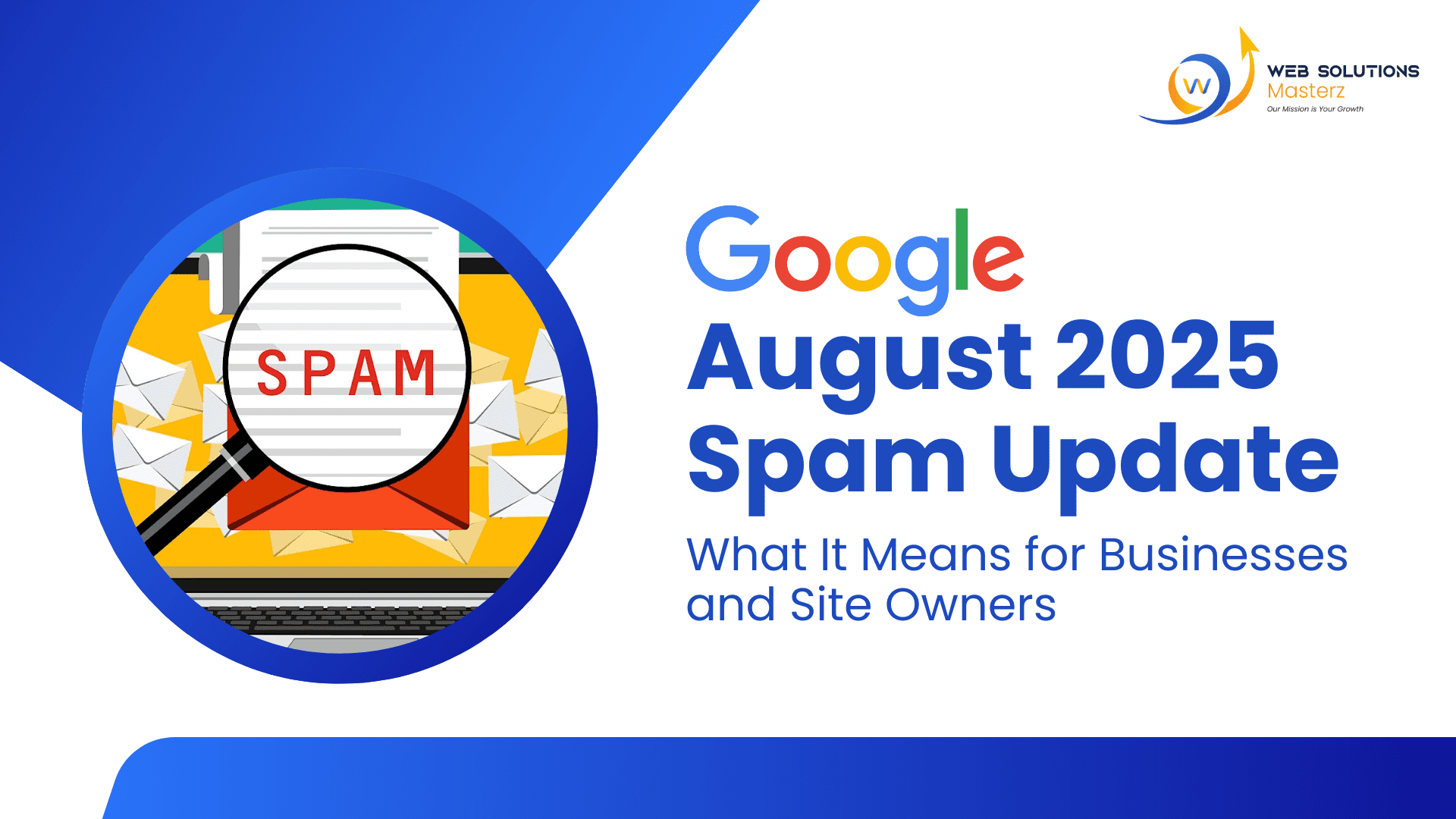Google’s August 2025 Spam Update: What It Means for Businesses and Site Owners
In the fast-moving world of SEO, staying ahead of Google updates isn’t optional — it’s mandatory. On August 26, 2025, Google released a new spam update that’s already shaking up rankings, traffic, and search visibility for many sites globally. In this post, we’ll look at what this “August 2025 Spam Update” is, why it matters to brands and website owners, and what concrete steps you should take to stay safe — especially if you are working with or are a Digital Marketing Company in Kolkata like WebSolutions Masterz.
Glancing Back at Google’s Last Update
Before this spam update, the most recent major algorithm change was the June 2025 Core Update. Core updates tend to have broad implications—content quality, site user experience, mobile speed, overall trust signals, and so on.
What’s different now:
This new update is a spam update — specifically targeting manipulative, low-quality, or deceptive tactics.
It’s Google’s first spam update of 2025; the last one was in December 2024.
It’s global and covers all languages. So no location or language gets a pass.
What is the Google’s August 2025 Spam Update?
Google defines this as a “normal spam update,” meaning that it reinforces and improves its existing spam detection systems rather than introducing a completely novel set of rules. Key aspects:
Rollout began around August 26, 2025, approximately 12:05 p.m ET.
It will take “a few weeks” to complete. During this period, ranking and traffic volatility can be expected.
Applies globally, in all languages.
The goal is to better enforce Google’s spam policies by detecting and filtering out spammy content that provides little or no value, uses manipulative practices, or tries to game search rankings.
What Site Owners Should Do
If your brand or site has been affected—or you want to make sure you aren’t affected—here are five important steps. Consult an SEO agency to discuss the essential steps, such as:
1. Audit Your Content
Review your existing pages for thin content or duplicate content. If pages are little more than placeholders, consider enriching or merging them.
Identify pages with high bounce rates or very low time spent—these may be signals that content isn’t meeting user expectations.
Ensure content is up to date, well-researched, and original. Add value (case studies, data, unique insights) wherever possible.
2. Eliminate Spammy Practices
Remove keyword stuffing: avoid over-use of the same key phrases in unnatural ways.
Check for any automated / programmatically generated content that isn’t edited or improved by humans.
Audit your backlinks: disavow harmful or irrelevant backlinks. Avoid being part of link networks or paid link schemes.
Turn away from tricks like doorway pages, sneaky redirects, or hidden text. These are classic spam signals.
3. Strengthen E-E-A-T Signals
“E-E-A-T” stands for Experience, Expertise, Authoritativeness, Trustworthiness. Google’s been pushing this more heavily.
Make authorship clear: have names, credentials, possibly links to author bios.
Where relevant, provide evidence of experience (case studies, client testimonials, original research) rather than generic content.
Secure and maintain trust signals: SSL, privacy policy, About Us, clear contact info.
If topics are YMYL (Your Money or Your Life), eg. finance, health, legal, more care is needed to meet high standards.
4. Monitor Google Search Console and Analytics
Keep a close eye on impressions, clicks, rankings, and any manual action notices.
Track traffic trends over time, not just day-to-day fluctuations (because rollout spans weeks).
Use annotations to mark when the update started, to help correlate drops or gains.
Check which pages are losing traffic: is it site-wide or just specific sections? That tells you where to focus your efforts.
5. Be Patient with Recovery
Never assume a minor drop is permanent; Google spam updates often cause volatility before things stabilize.
If you make fixes (content improvement, cleaning up spammy links etc.), it can take time for recovery. Reindexing and ranking adjustments don’t happen overnight.
Don’t over-react: avoid making sweeping changes prematurely that might cause other issues.
Final Thoughts
Google’s August 2025 Spam Update serves as a reminder: manipulative or low-quality tactics may provide short-term gains, but they carry real risk and often short lifespans.
For brands, website owners, and digital marketing agencies alike—especially for those operating in highly competitive markets like Kolkata—this update is an inflection point. It’s an opportunity to double-down on quality, authenticity, transparency, and trust.
At WebSolutions Masterz, we believe the kind of digital marketing that truly lasts is built on helping real users, showcasing real expertise, and maintaining ethical SEO practices. If your site has been affected, or you’d like a full audit to ensure you’re not at risk, reach out. As a leading Digital Marketing Company in Kolkata, we’re here to help you not just survive algorithm updates, but thrive through them.
